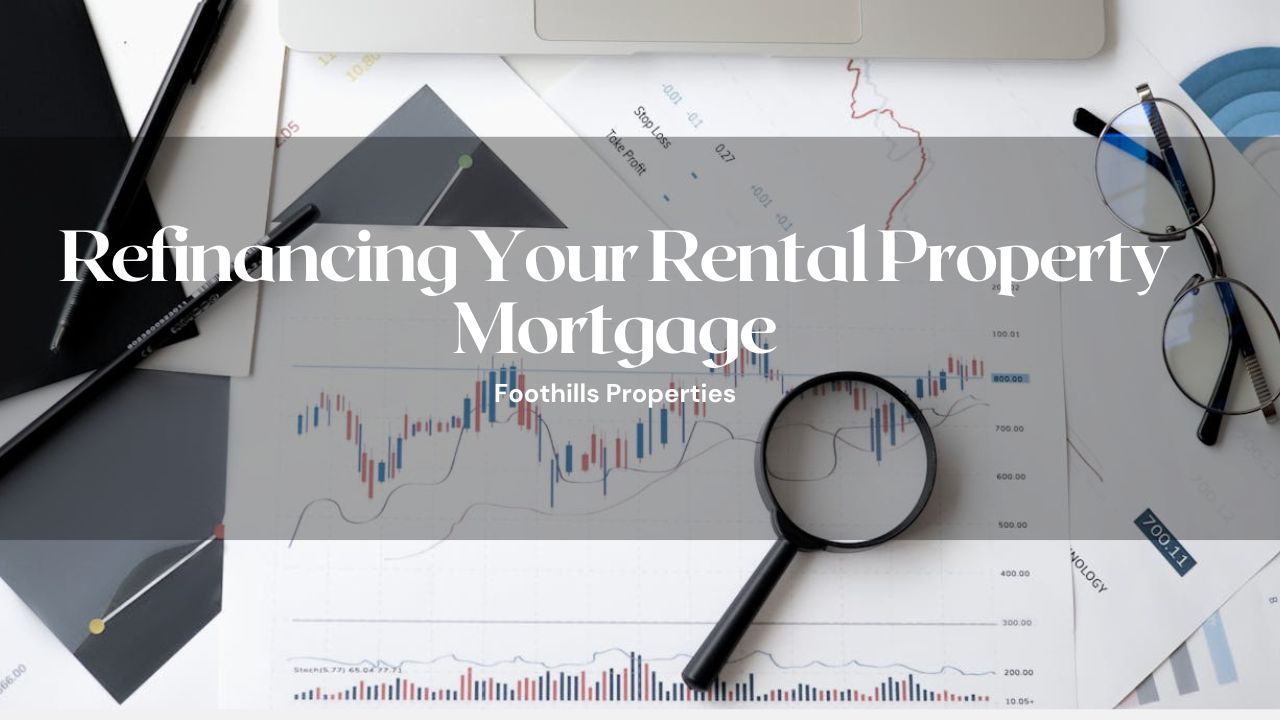
Key Takeaways
Property investors refinance to lower interest rates, reduce loan terms, improve cash flow, or access built-up equity for new investments or property upgrades.
To qualify, borrowers generally need a solid credit score (ideally 800+ for best rates), a debt-to-income ratio under 50%, and at least 25-30% equity in the property.
Investors must gather financial records, submit an application, lock in a rate, undergo underwriting, and close the loan (typically within about 45 days) while comparing offers from different lenders for the best terms.
Rental property refinancing is one way that landlords and property investors can find an escape route from high-interest mortgages that are stifling cash flow from their rental property. Rental property refinancing also helps cash-strapped investors raise capital to jump on another project.
In this article Tuscan Foothills Management and Realty, we answer how rental property refinancing works, what the benefits are, lenders’ requirements for refinancing a rental property, and the steps to follow to refinance your investment property.
Why Refinance Your Rental Property?
Refinancing a rental property means replacing the existing mortgage with a new one. Typically, the new loan will offer better terms than the existing mortgage. There are four main reasons why property investors sometimes opt for mortgage refinancing. These include:
A lower interest rate: Over the lifetime of the standard 30-year mortgage, the difference between a 5% APR and a 6% APR can amount to tens of thousands of dollars. Refinancing the mortgage allows investors to retain some of the money that would have gone into interest payments.
Shortening the repayment period: Even though a shorter loan term means higher monthly payments, in the end, you will have paid less interest overall.
Improved cash flow: Mortgage refinancing can help you secure lower payments, making more money available for the day-to-day operations of your rental.
Tapping your equity: The built-up equity on your property can serve as a down payment for financing another rental property or provide the cash to remodel an existing rental. Mortgage refinancing offers you a readily available way to access that equity.

Requirements for Refinancing Rental Properties
What are lenders’ requirements when refinancing an investment property?
Good credit: The majority of lenders want you to have a credit score of 620- 670 before they can even consider your loan refinancing application. But this won't get you the best interest rates. For the most favorable loan terms, your credit score should be at least 800.
Eligible income: Lenders use your income/income sources to determine if you can afford the new mortgage payment. Accepted income sources typically include salaries, wages, and commissions, plus a portion of the rental income from your investment property.
Debt-to-income (DTI) ratio: This looks at your total debt versus your gross monthly income to determine if you will have enough money to cover your living expenses after meeting your debt obligations. The goal of this metric is to ensure that you are not overextended. The minimum DTI lenders expect is 50%.
Loan-to-value ratio: Lenders typically require an LTV ratio of 70%-75%. This means that to qualify for mortgage refinancing, you should have 25%-30% equity in your property. LTV ratio is the current balance of your loan divided by the current market value of your property.
How to Refinance Your Rental Property
Step 1: Prepare your documents:
You can find the list of required documents on the lender’s website. To facilitate this process, these documents should be up-to-date. They usually include the following:
Proof of income: Pay stubs from your current employer can satisfy this requirement, if you are employed. For self-employed applicants or individuals who earn commissions, other forms of income validation are expected. They may need to provide their bank statements.

W-2 forms: If you are employed, this provides proof of your total yearly earnings, federal & state income taxes, and pretax deductions. However, if you are self-employed, the required documents for these will depend on the specific lender you are talking to.
Financial statement: This provides documentation of all the assets you currently own.
Proof of homeowners' insurance: A recent bill (or other accepted documents) from your insurance company is required as proof that your home is adequately insured, along with proof that your rental property is adequately covered.
Lease agreements: You may be asked to provide a copy of the lease agreement for each tenant in your rental property. This helps lenders assess the cash flow from the property.
Keep in mind that it makes good sense to shop around and compare quotes from different lenders when planning to refinance your rental property mortgage. Some lenders have specialized programs for property investors.
Step 2: Submit your application:
With most lenders, you can do this on their website. Before clicking “submit,” check to make sure that you have uploaded all the required documents. Also, check to see if the lender offers any prequalification or preapproval options. After submitting your application, wait for a message from the lender.
Step 3: Lock in your rate:
If your application is approved, the lender will send you an offer with their interest rate. If you like the offer, you must lock in the rate for a period of 15-60 days. During this period, when your loan is being processed, you are guaranteed that the interest rate will not increase. Note that if you choose to “float” instead of locking in the rate, it could change.

Step 4: Underwriting:
This is the phase when the lender performs a detailed assessment of your financial position. They will evaluate your personal finances and the finances of your rental property. This can take a few days or several weeks, and you may need to provide additional details during the period. Your application can still be denied if the lender is dissatisfied in any way.
Step 5: Close the loan:
If all conditions are met, the lender will give the final approval, clearing you to close the loan. To do this, they will go over the details of the loan with you, after which you will pay the closing costs to make the mortgage refinance official. Depending on the lender you choose and the adequacy of your provided documents, this entire process could take less than 45 days.
Conclusion
Does mortgage refinancing sound like something you should do to improve cash flow from your rental property or to expand your portfolio of investment properties? Would you like more guidance on how you refinance your rental property? If so, Contact Tuscan Foothills Management and Realty for more information today!








